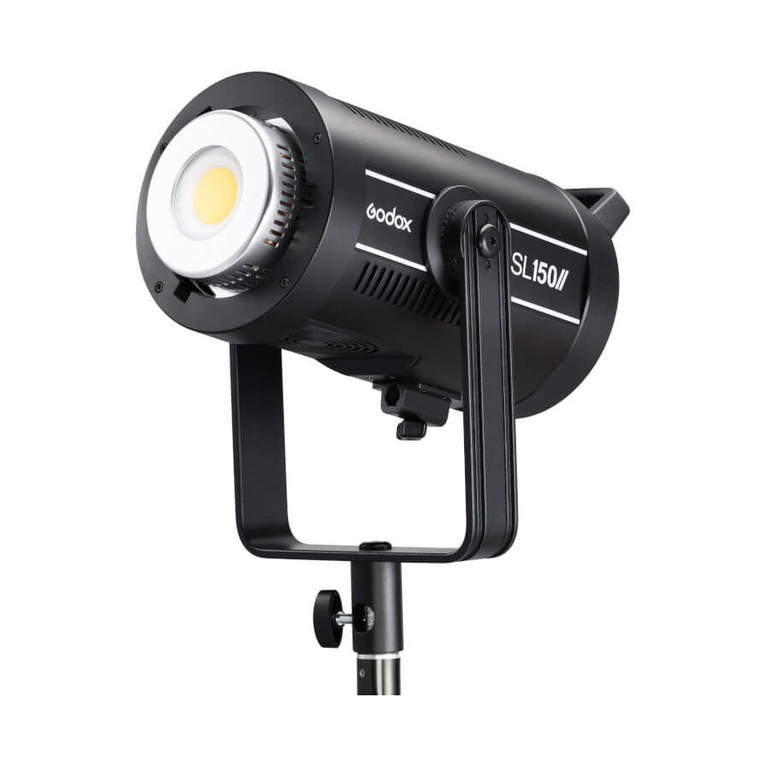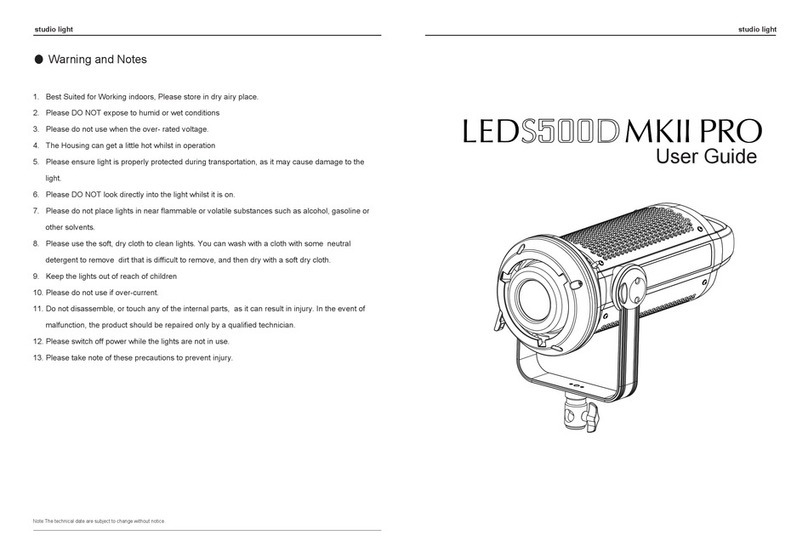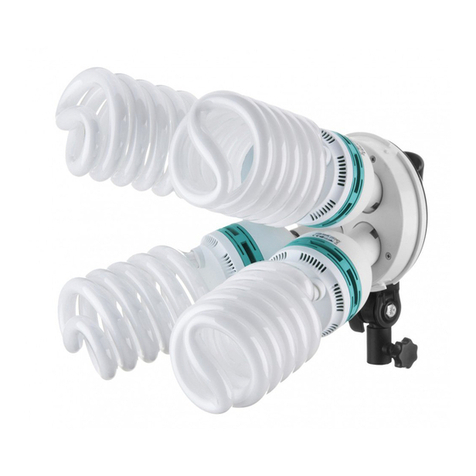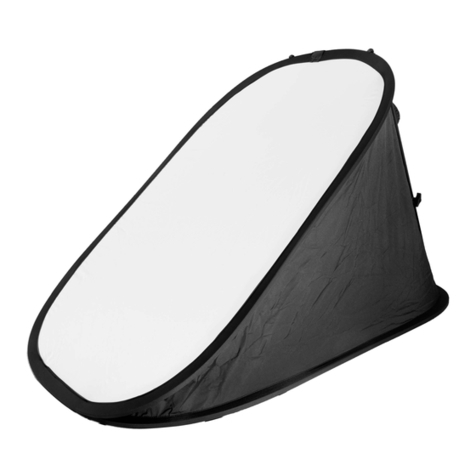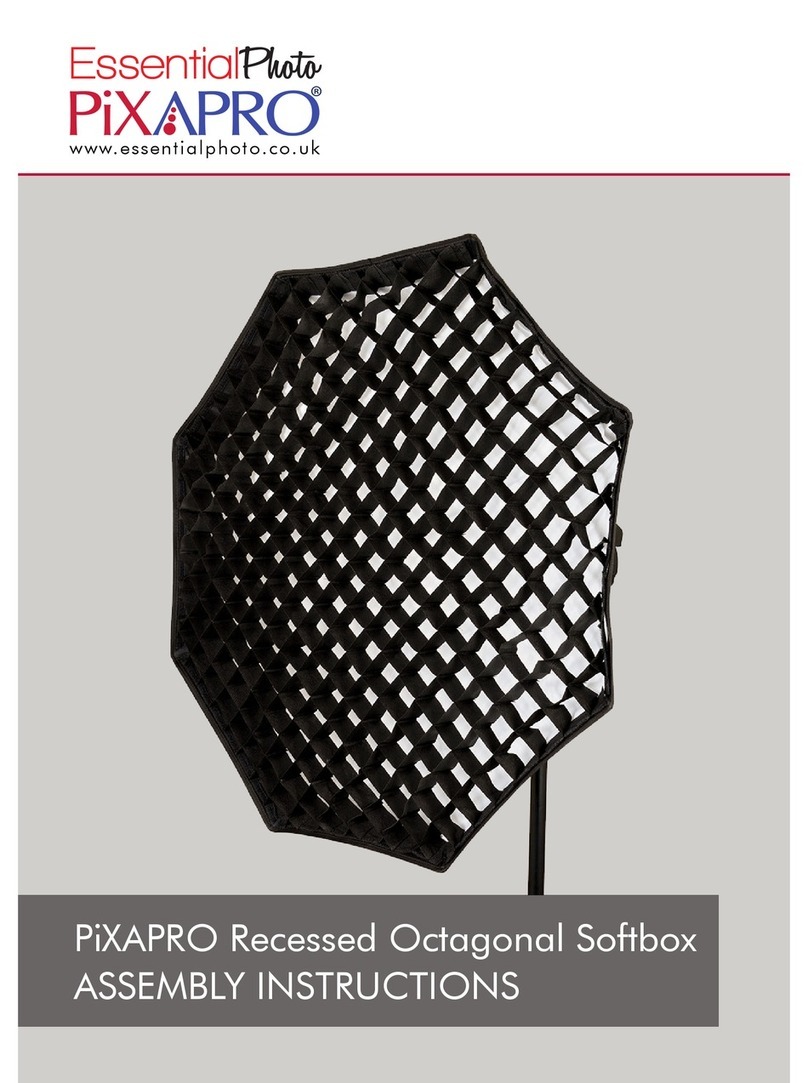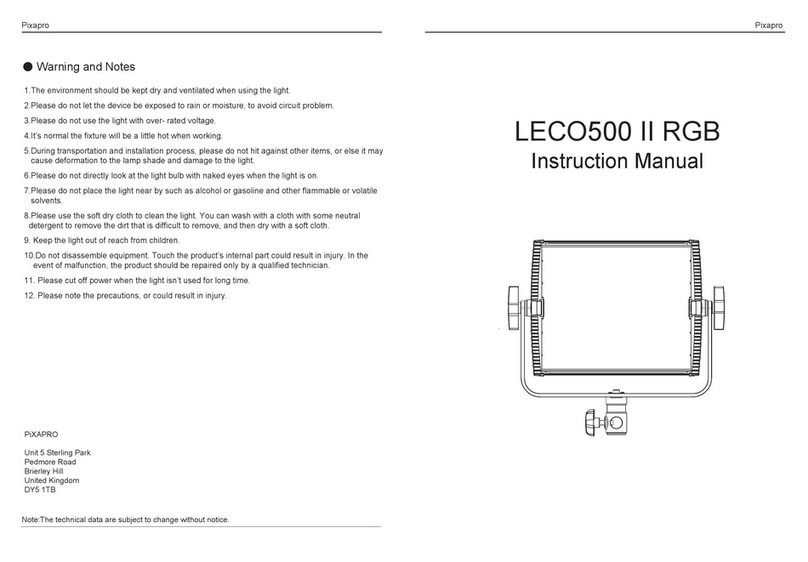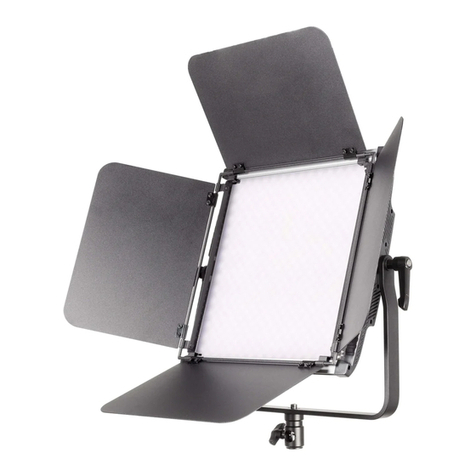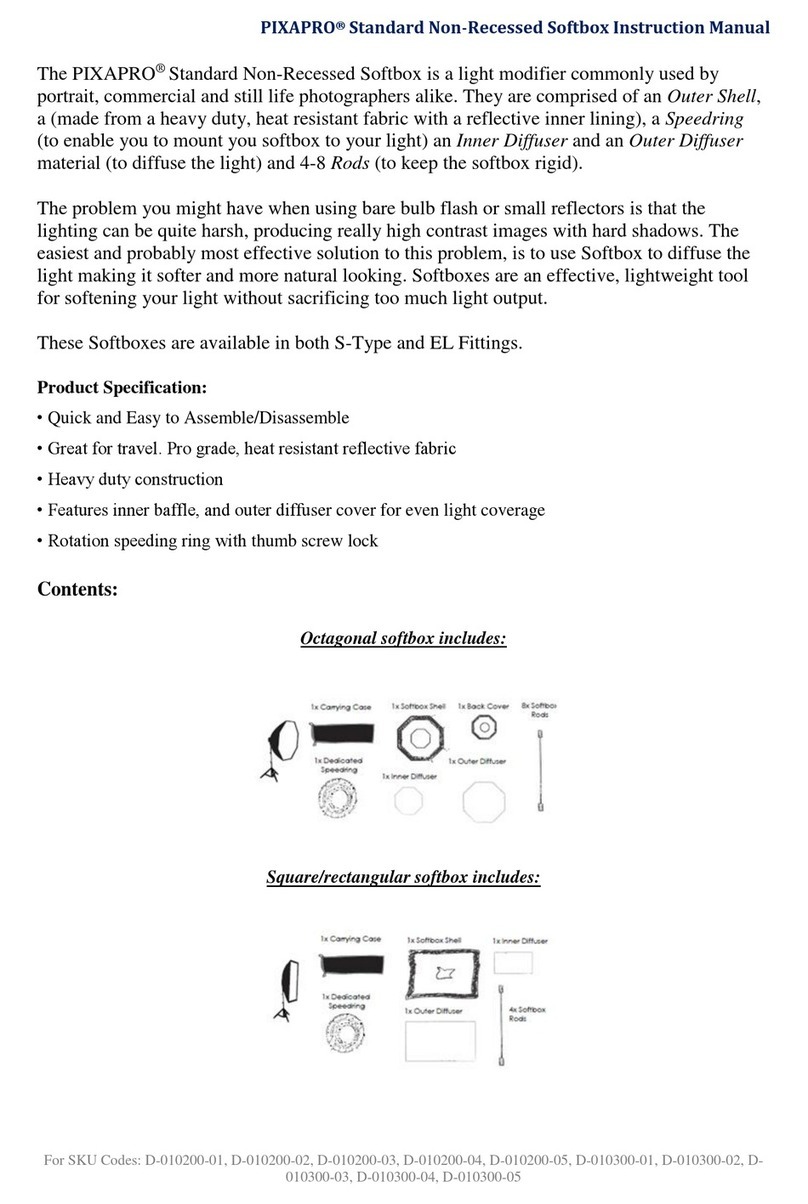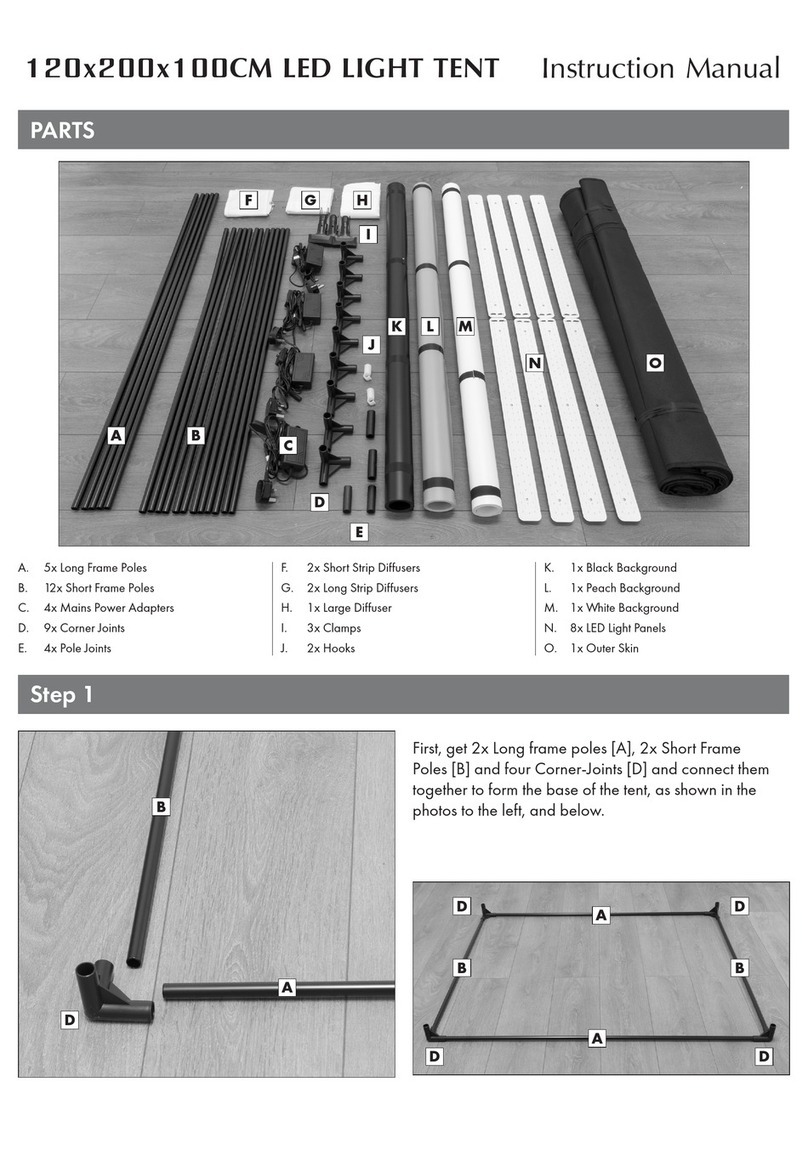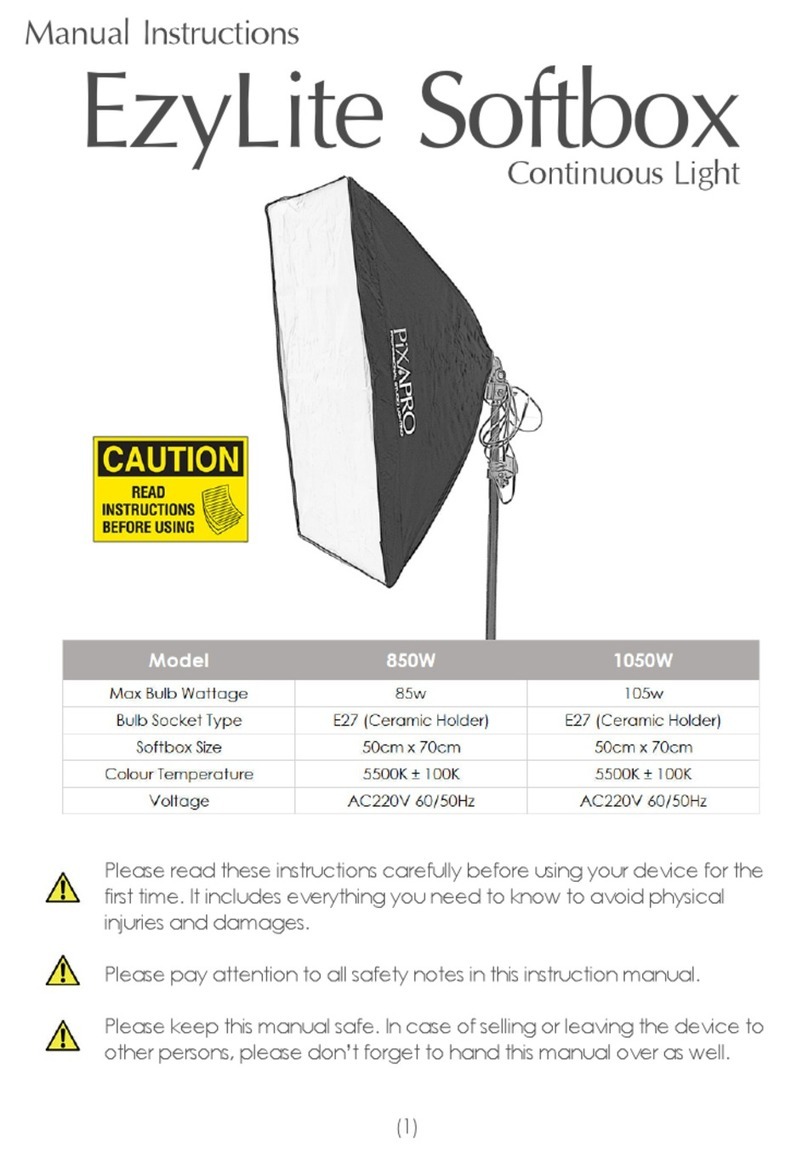When there is flammable accessory on the flash unit, do not keep the
modeling lamp on for a long time. It is recommended to cool it down
for one minute after 10 minutes' working.
- 05 -
it's fully charged.
The device is equipped with memory function for the panel setting. It will help
remember the panel setting 3 seconds after you set it. When starting up the flash
next time, the panel setting will be the same as that before powering it off.
The flash unit is built in with a Wireless Control Port (17) so that you can wirelessly
control the on-and-off of your flash, modeling lamp and buzzer, as well as adjust
the flash output level, etc.
To control the flash wirelessly, you need a PIXAPRO series remote control set (on-
camera and on-flash). Insert its receive end into the Wireless Control Port (17) on
the flash and insert the transmit end into the camera hot shoe. Settings made on
the hotshoe-mounted transmit and receive ends will be wirelessly communicated
to the flash. Then you can press the camera shutter-release button to trigger the
flash.
For full instructions on the use of FT series remote control, see its user manual.
Shut down the power and remove the power cord before replacing the flash tube
and wear insulated gloves. Then, loosen the iron wire on the tube, keep a
balanced hold on the two feet of the flash tube and pull out the old tube gently.
Take down the feet casing from the old tube and put it on the new one. Hold two
feet of the new tube, and target directly towards the two copper outlets, then push
them slightly in. Twine the iron wire on the stainless steel sheet to fix the flash
tube.
Memory Function
Wireless Control Function
Tube Replacement
- 06 -
Power Output Control
Test Button
Sync Triggering
Slave Trigger Model
Buzz Function
Flash output controller (5) decides different power output, satisfying the light
requirements in different environment. The power is adjustable freely from 5.0 to
8.0 which will be accordingly told on the digital display (10). “OF” on the display
indicates that the flash triggering function is turned off. It can automatically
discharge power when the flash output is adjusted from high to low.
To fire the flash without taking a picture, press the test button (9). It can also help
adjust the flash brightness when combined with the flash output controller (5).
The sync cord jack (2) is a Φ3.50mm plug.
Insert a trigger plug here and the flash will be
fired synchronously with the camera shutter.
Three slave triggering models are available
and can be set by pressing Slave Model Button (8).
1.No optical control: The slave triggering indicator (13) is off, indicating the slave
triggering function is shut down.
2.One fire model: The slave triggering indicator (13) glows blue, indicating the flash
will fire synchronously when receiving one external flash. In this model, the flash
can function as an auxiliary lamp, offering various effects of light and shadow.
3.Anti-preflash model: The slave triggering indicator (13) glows red, indicating the
flash will receive two external flashes within 2 seconds and will fire synchronously
when receiving the second flash. In this model, the flash can function as an
auxiliary lamp, applicable to TTL system. With this anti-preflash function,
synchronization is supported with cameras having a one-preflash firing system.
The sound button (7) is used to decide whether there is sound reminder for ready
flash after recharging. When the buzz indicator (12) is on, it means buzz function is
working; if it is off, the buzz function is shut down. A “BI” sound will be heard when
output controller (4) is used for adjusting the power output level of modeling lamp.
Modeling lamp will be off automatically after lighting for 2 hours, avoiding overheat
due to long-time lighting when the user is not nearby.



